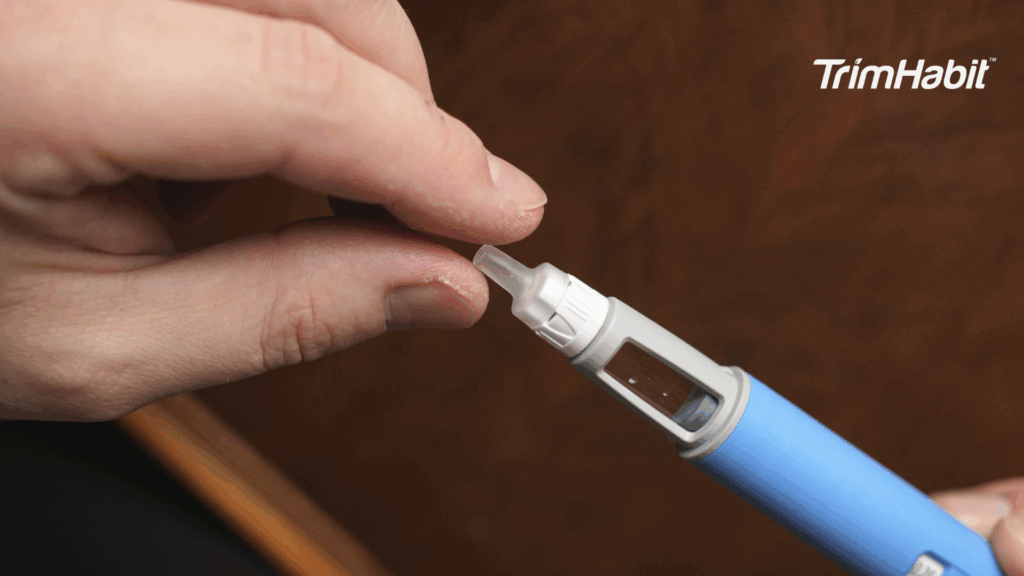Intermittent fasting has gained widespread attention for its ability to support weight loss and boost metabolic health. But did you know incorporating healthy fats into your intermittent fasting diet plan can enhance its effectiveness?
Healthy fats provide a sustainable energy source during fasting periods and support brain health, heart health, and hormonal balance1,2,3.
Let’s explore the role of healthy fats in your intermittent fasting diet plan and ways they can amplify your health benefits while maintaining optimal energy and nutrition.
Understanding Intermittent Fasting
At its core, intermittent fasting allows your body to switch from using glucose for energy to burning fat, a process known as metabolic switching.
This shift can help reduce body weight, enhance insulin sensitivity, and improve metabolic functions, including blood sugar regulation and lipid metabolism4,5.
Key Concepts of Intermittent Fasting
To successfully incorporate intermittent fasting into your lifestyle, it’s essential to understand its foundational concepts:
- Fasting Periods: These are when you refrain from consuming any calories. During these fasting hours, your body relies on stored energy, primarily fat, to function. The length of fasting periods varies depending on the type of intermittent fasting diet you follow.
- Eating Windows: These are the designated periods when you consume food. The goal during this time is to nourish your body with nutrient-dense, healthy foods that provide the energy and nutrients needed to sustain you through the next fasting period.
Types of Intermittent Fasting Diets
There are several popular methods of intermittent fasting, each with a unique approach to balancing fasting periods and eating windows:
- Alternate-Day Fasting: In this method, you alternate between fasting days, during which you consume very few or no calories, and regular eating days.
- Eat Stop Eat: This involves fasting for 24 hours once or twice a week, then returning to normal eating habits on non-fasting days.
- Time-Restricted Eating: One of the most popular forms of intermittent fasting, this method limits food consumption to a specific window each day, such as an 8-hour eating period followed by a 16-hour fast.
- Periodic Fasting: This approach involves fasting for extended periods, such as 24 to 48 hours, at regular monthly intervals.
Health Benefits Of Intermittent Fasting
By cycling between eating and fasting, your body can rest, repair, and optimize its metabolic functions in ways that traditional calorie restriction can’t always achieve.
Weight Loss and Fat Loss
One of intermittent fasting’s standout benefits is its ability to promote weight loss. It encourages metabolic switching, shifting your body from burning glucose to burning fat for energy5,6.
This process helps reduce body fat while preserving lean muscle mass, a key factor in maintaining a healthy weight.
Improved Insulin Sensitivity
Intermittent fasting is also associated with improved insulin sensitivity, making the body more efficient at regulating blood sugar levels. This can significantly reduce the risk of metabolic diseases like diabetes mellitus7,8,9.
Studies have shown that individuals practicing intermittent fasting experience lower fasting insulin levels and improved glucose tolerance, making it a promising strategy for those managing or hoping to prevent insulin resistance10.
Enhanced Brain Health and Cognitive Function
The brain also reaps significant rewards. During fasting, your body produces ketone bodies, an alternative fuel source for your brain11,12. This supports brain health and enhances cognitive functions like memory, focus, and mental clarity.
Unsurprisingly, many people report feeling more mentally sharp during fasting periods.
Longevity and Disease Prevention
One of the most exciting findings is intermittent fasting’s link to increased life span and better overall health.
Intermittent fasting can help prevent chronic diseases and improve longevity by reducing inflammation and oxidative stress13,14.
Research also highlights its role in disease prevention, from heart disease to neurodegenerative conditions15,16, making it a powerful tool for enhancing quality of life and life expectancy.
Why Are Healthy Fats Essential?
Unlike carbohydrates, which provide a quick but short-lived energy boost, healthy fats are a slow-burning fuel source that your body can rely on during prolonged fasting17. They prevent energy crashes and help sustain physical and mental performance throughout the day.
This is especially important during intermittent fasting when energy needs must be met within a limited eating window.
Furthermore, healthy fats aid in lipid metabolism, the process by which your body breaks down and utilizes fats for energy, promoting overall metabolic health1,18.
Healthy fats are a nutritional powerhouse. In addition to providing energy, they are rich in fat-soluble vitamins such as A, D, E, and K, essential for immune function, bone health, and overall well-being19,20.
Including healthy fats in your diet ensures that your body properly absorbs and utilizes these vitamins, contributing to better overall health.
The Role Of Healthy Fats In Your Intermittent Fasting Diet Plan
Incorporating healthy fats into your intermittent fasting diet plan is essential for optimizing short-term energy and long-term health outcomes. Healthy fats are crucial in sustaining energy, supporting metabolic functions, and enhancing health benefits during fasting.
1. Weight Management and Healthy Fats
Healthy fats can be a game-changer if your goal is sustainable weight loss. They help reduce body weight by facilitating fat loss while preserving lean muscle mass, which is critical for maintaining a healthy metabolism21.
Unlike simple carbohydrates, which cause energy spikes and crashes, healthy fats provide a steady, long-lasting energy source1,2,3. This prevents the cravings and overeating that often lead to weight gain.
Moreover, fats help you eat fewer calories by promoting satiety and making your eating habits more sustainable over time.
Consuming slow-digesting fats like those found in avocados, nuts, and seeds can help you feel fuller for longer, making it easier to adhere to your intermittent fasting routine without experiencing extreme hunger or energy dips.
2. Cardiovascular Health and Fats
Healthy fats also significantly benefit heart health, making them vital to a balanced diet. Monounsaturated fats, such as those found in olive oil and avocados, help lower LDL (bad) cholesterol levels, reducing the risk of heart disease22.
Additionally, omega-3 fatty acids from sources like fatty fish and flaxseeds support blood pressure control by improving vascular health and reducing inflammation23,24.
Another important benefit is their role in lipid metabolism, which helps maintain healthy plasma concentrations and supports cardiovascular function1,25.
Integrating healthy fats into your diet can improve your heart health while maximizing the benefits of intermittent fasting.
3. Brain Health and Cognitive Benefits
The brain thrives on healthy fats, especially during fasting periods with low glucose levels. Omega-3 fatty acids support cognitive functions such as memory, focus, and mental clarity23,24.
Additionally, the ketone bodies produced during metabolic switching serve as an alternative fuel for brain cells, enhancing neuronal function and protecting against cognitive decline11,12.
Many people who follow intermittent fasting report heightened mental performance, which can be attributed to the brain’s efficient use of ketones for energy.
By including healthy fats in your intermittent fasting diet, you can further boost your brain health and maintain optimal cognitive performance.
4. Insulin Sensitivity and Diabetes Management
One critical health benefit of intermittent fasting is its ability to improve insulin sensitivity; healthy fats can enhance this effect.
By stabilizing blood sugar levels and preventing spikes during eating periods, healthy fats reduce the body’s reliance on insulin, improving metabolic health4,5,10.
Randomized controlled trials have shown that diets rich in healthy fats can significantly lower fasting insulin levels and enhance glucose tolerance, making them a powerful tool for managing or preventing insulin resistance and related conditions like diabetes mellitus26,27.
Incorporating fats such as olive oil, nuts, and seeds into your meals can help you better regulate blood sugar and maintain stable energy throughout the day.
5. Appetite Regulation and Healthy Eating Habits
Healthy fats are also instrumental in appetite regulation, a key factor in maintaining a successful intermittent fasting routine.
They help control hunger hormones like ghrelin, reducing the risk of overeating during eating windows28,29. By promoting satiety, healthy fats can help you feel satisfied with fewer calories, making it easier to adhere to your fasting schedule and avoid the pitfalls of binge eating.
In addition to physical benefits, healthy fats support mental well-being by stabilizing mood and reducing the emotional triggers that often lead to unhealthy eating habits30.
This can be particularly beneficial for individuals prone to eating disorders or those struggling to establish balanced eating patterns.
Conclusion
Healthy fats are a cornerstone of any effective intermittent fasting diet plan, offering far more than just a source of energy.
By sustaining energy levels during fasting periods, they support vital metabolic functions, enhance brain health, and promote cardiovascular wellness by helping to maintain low blood pressure.
These fats also help shift your body into fat-burning mode, making it easier to burn fat and lose weight while preserving muscle mass.
Incorporating healthy food into your eating window can make a significant difference in achieving sustainable weight management.









